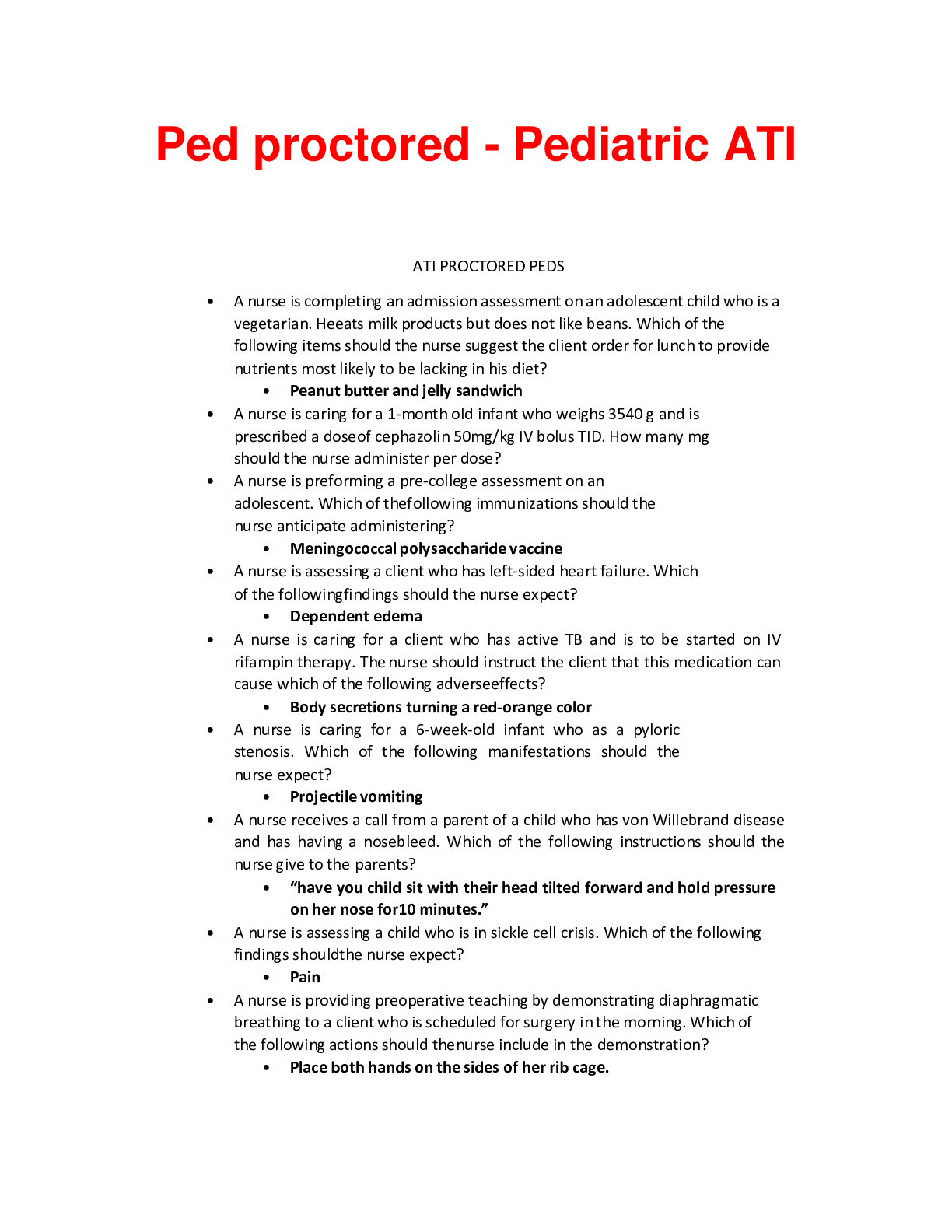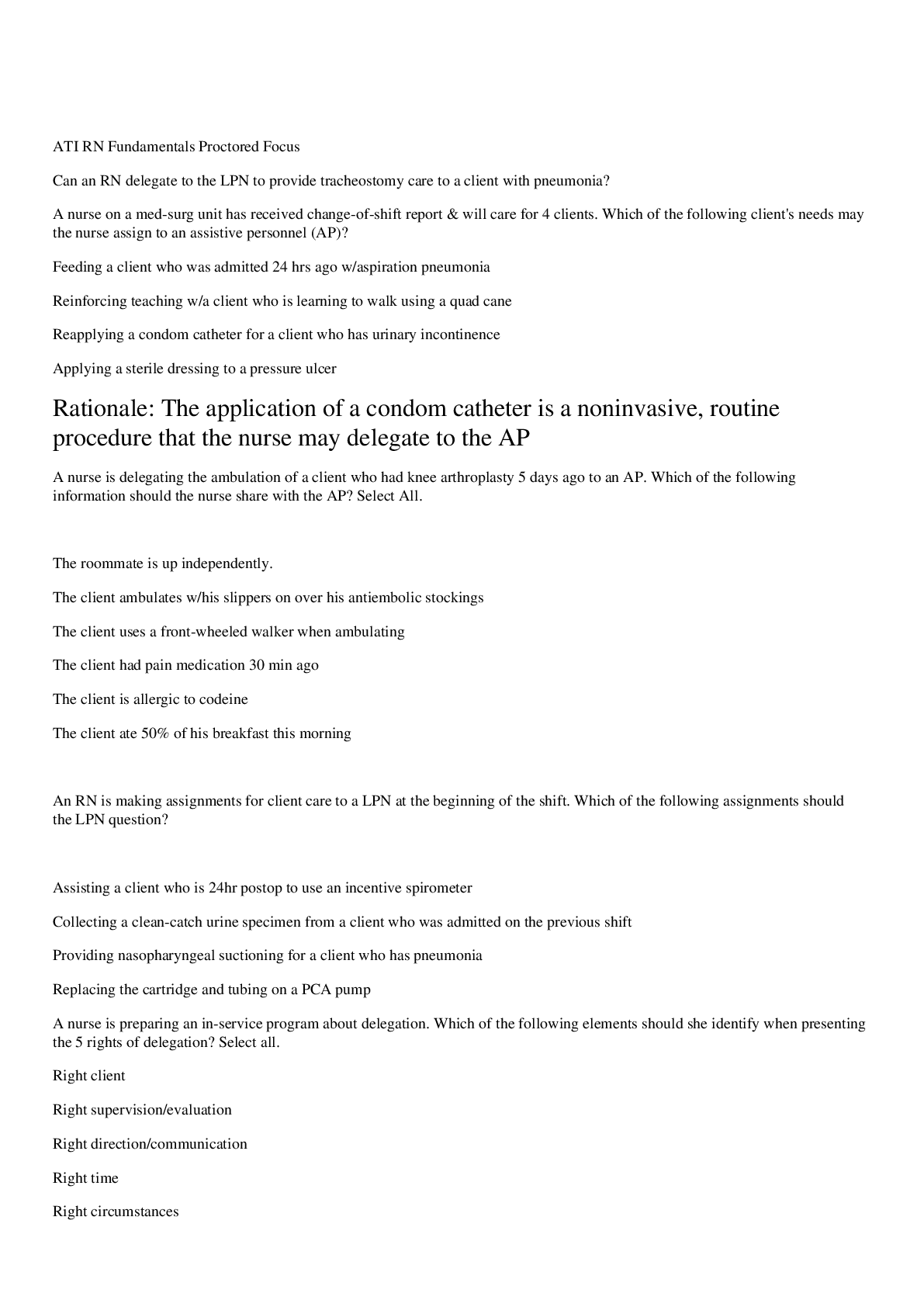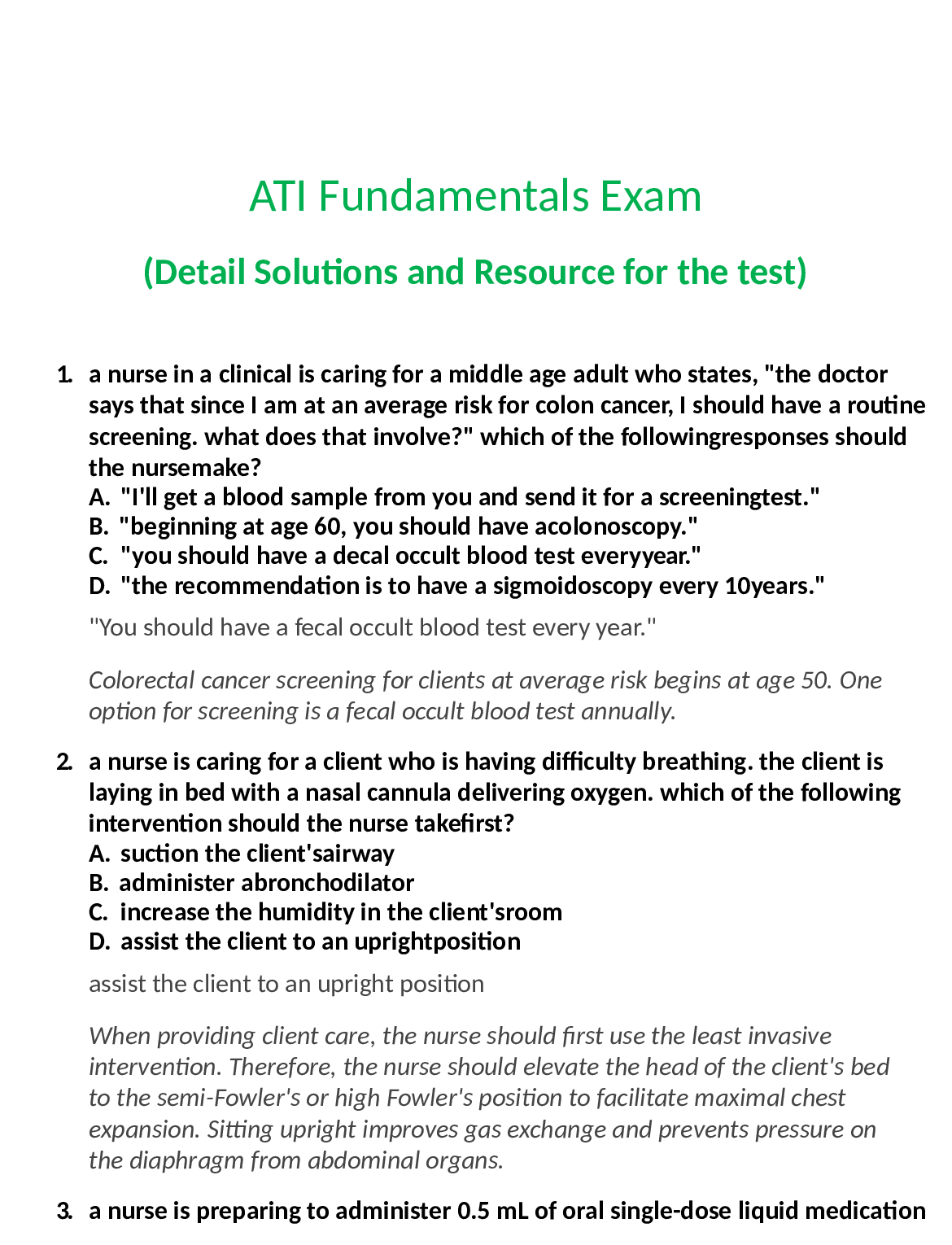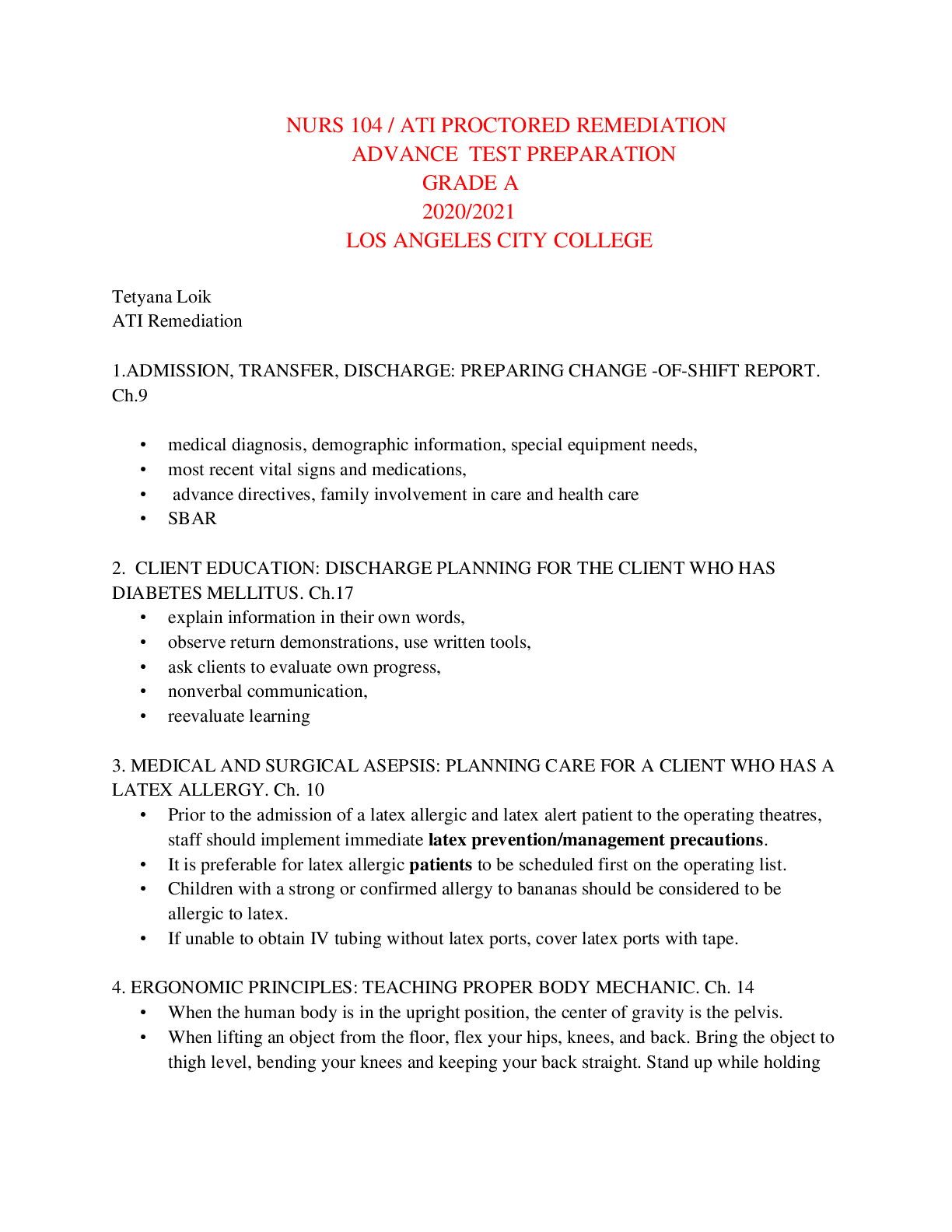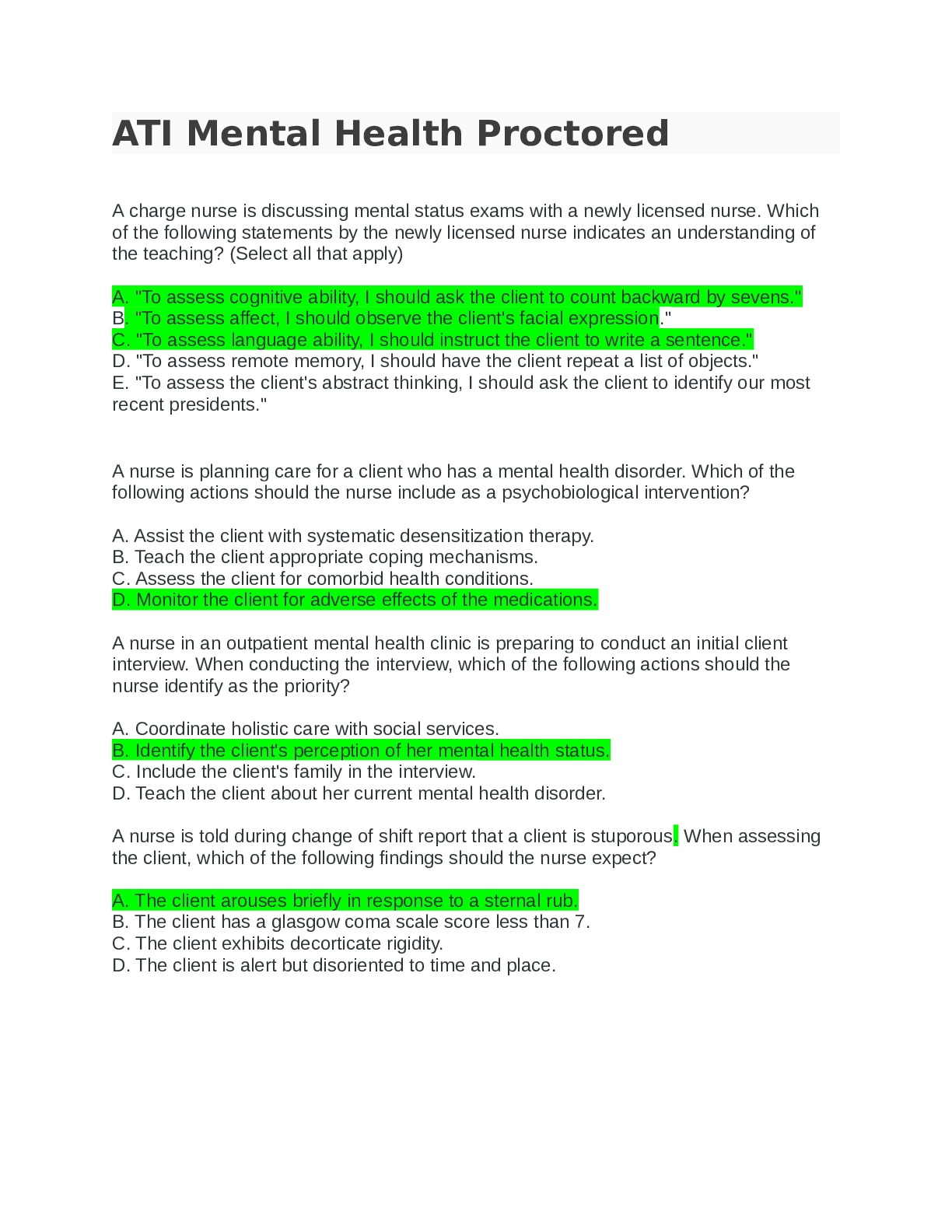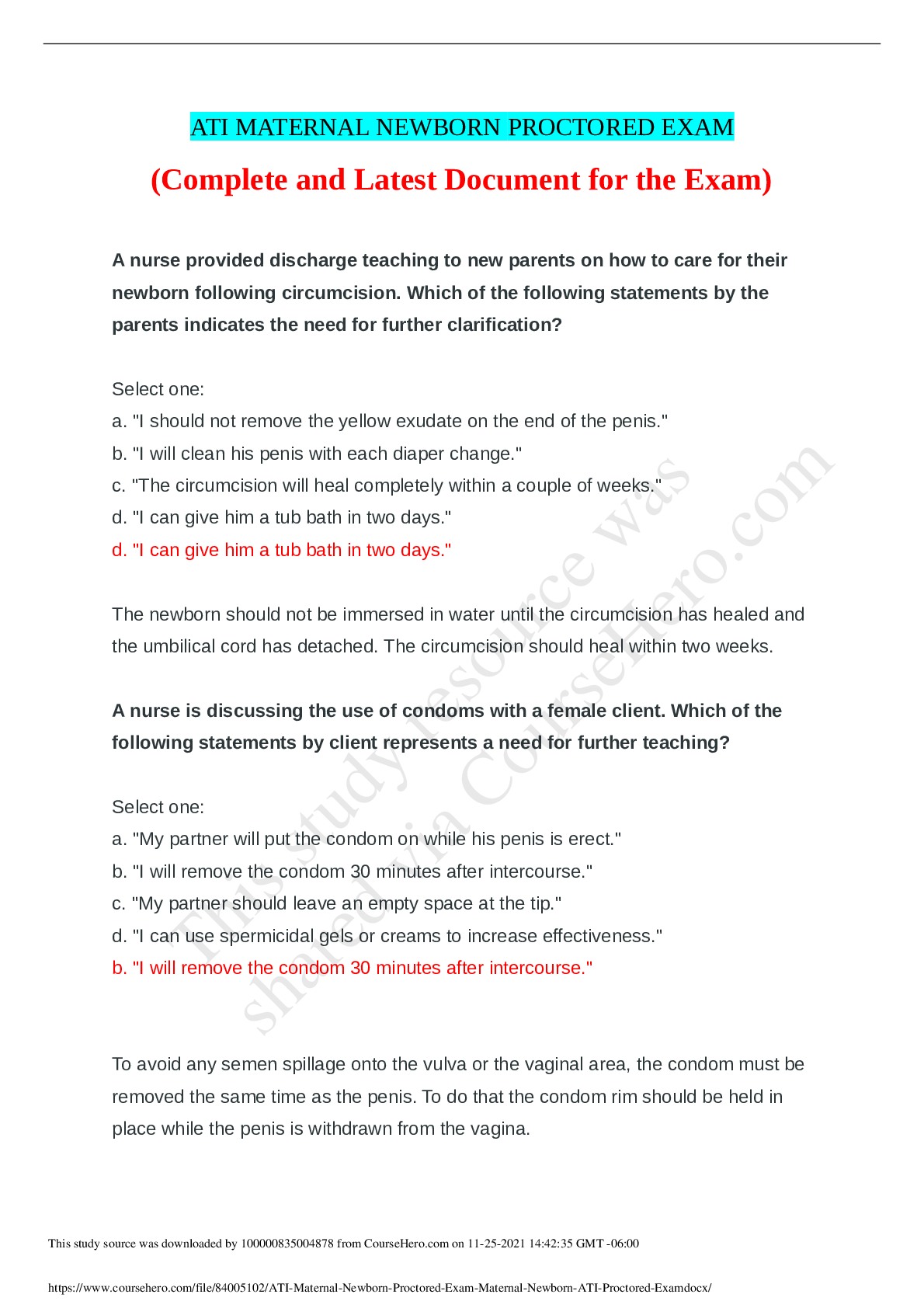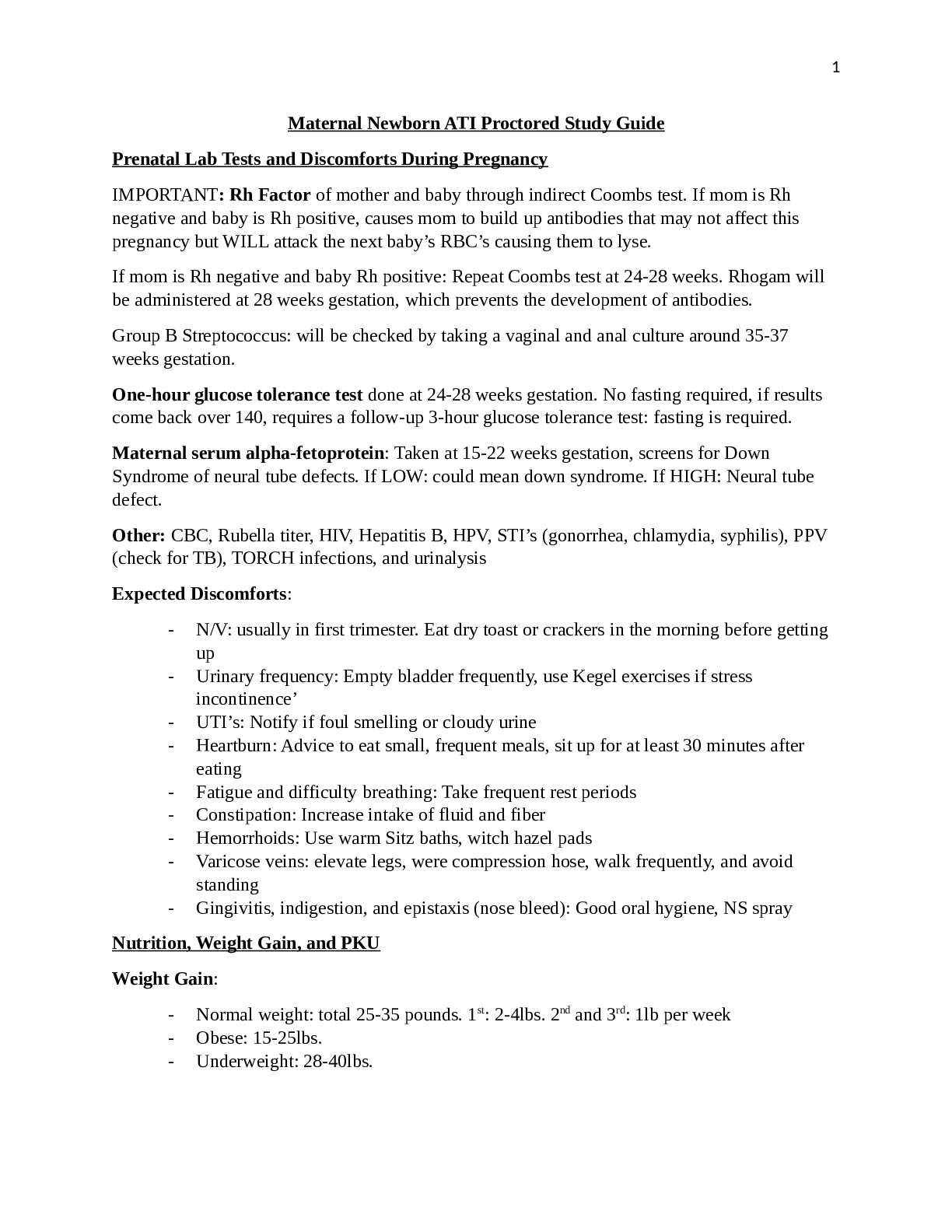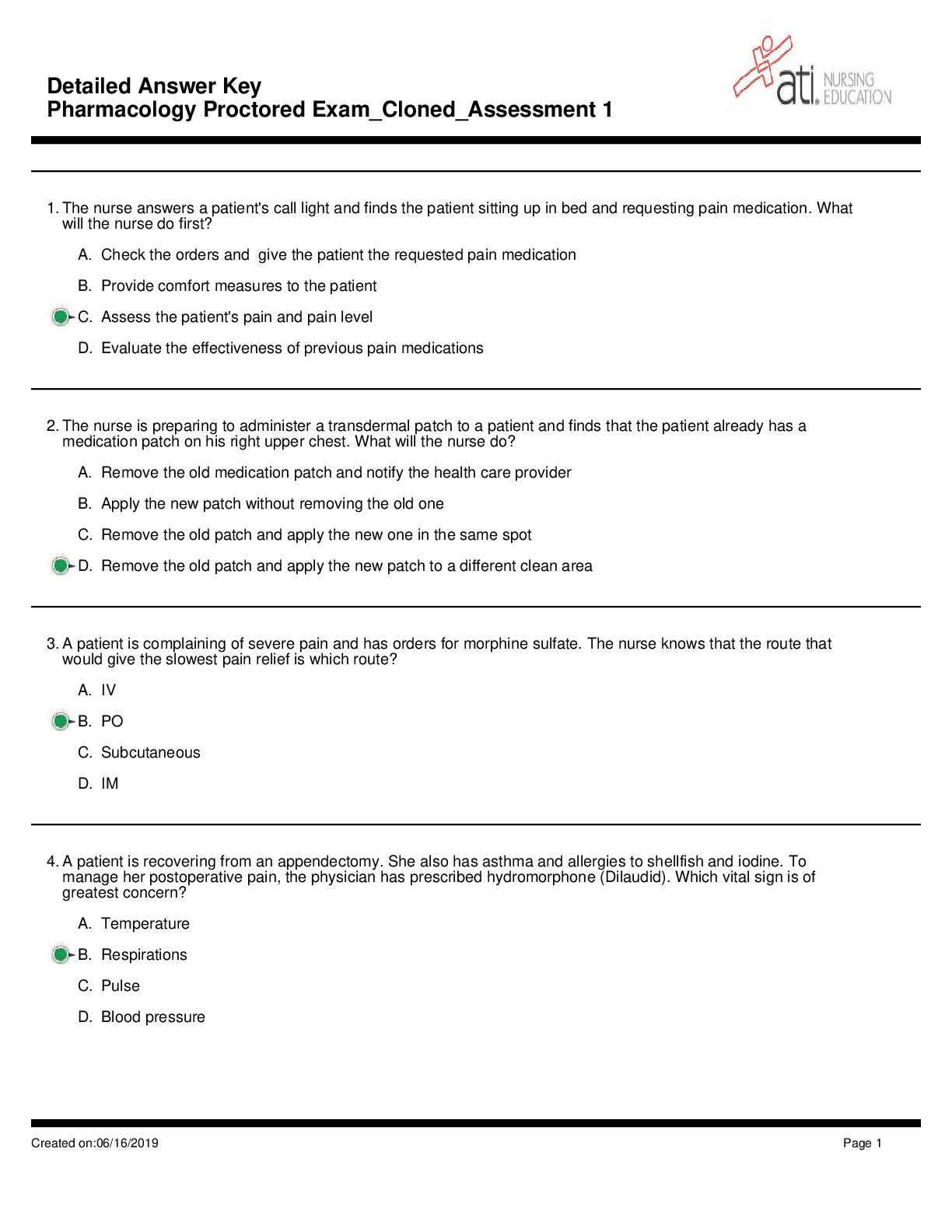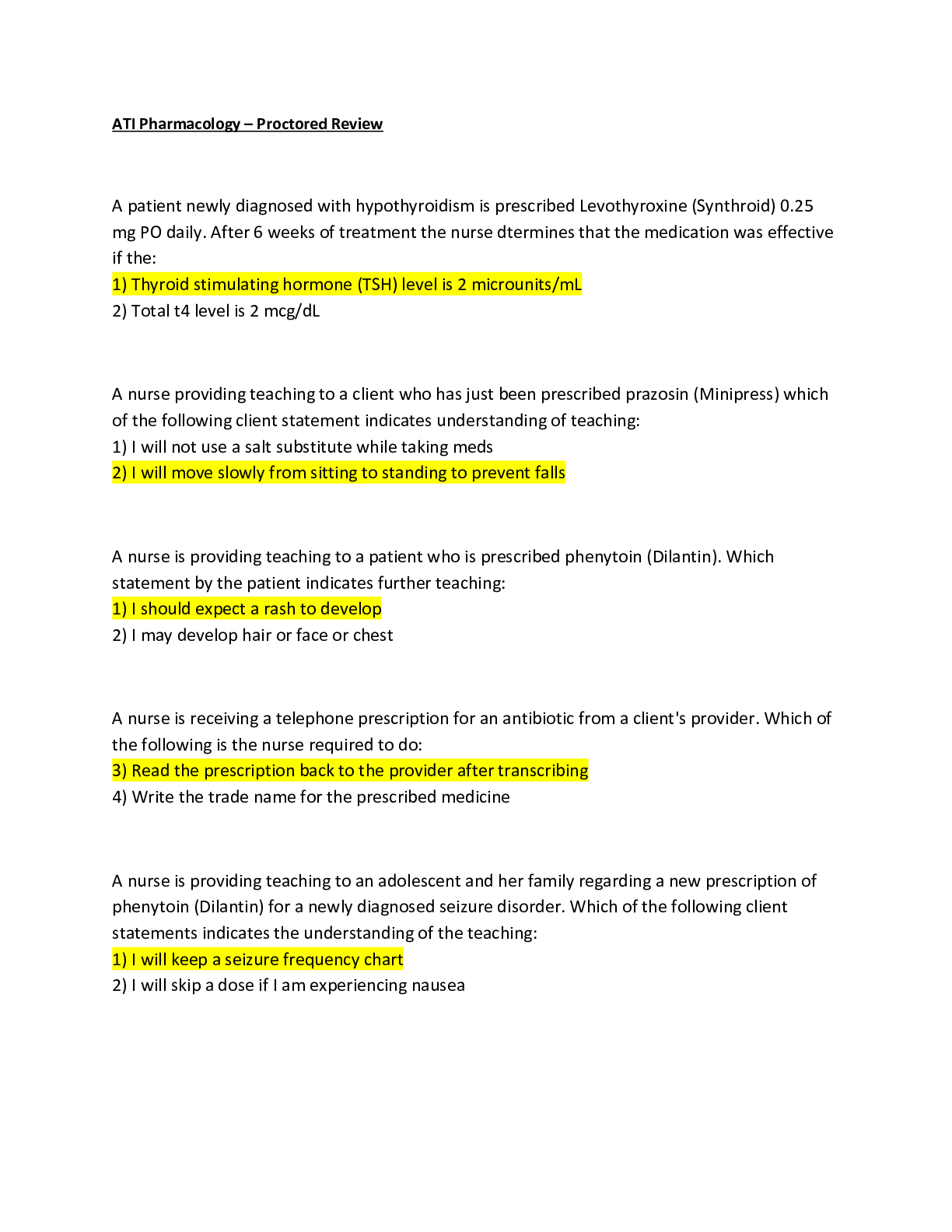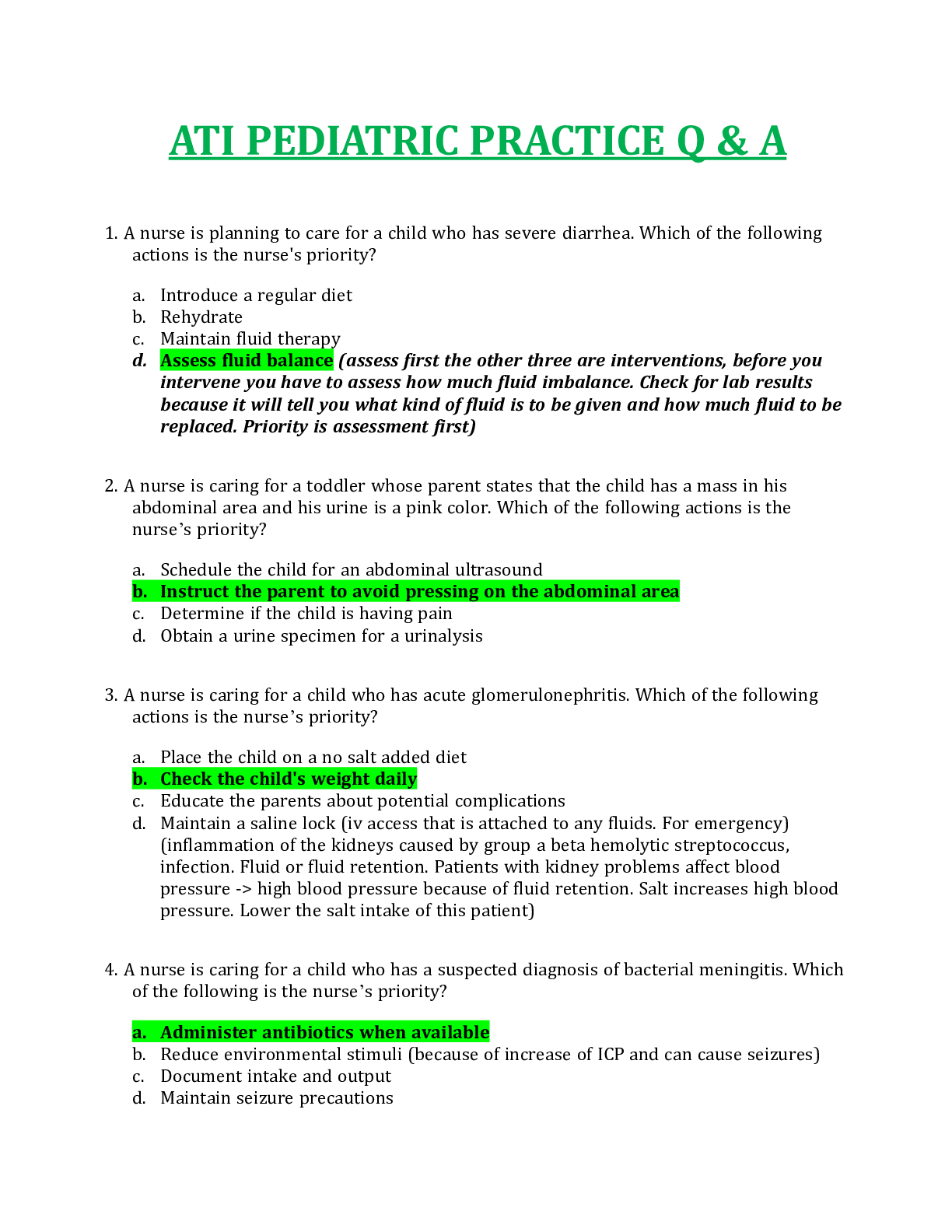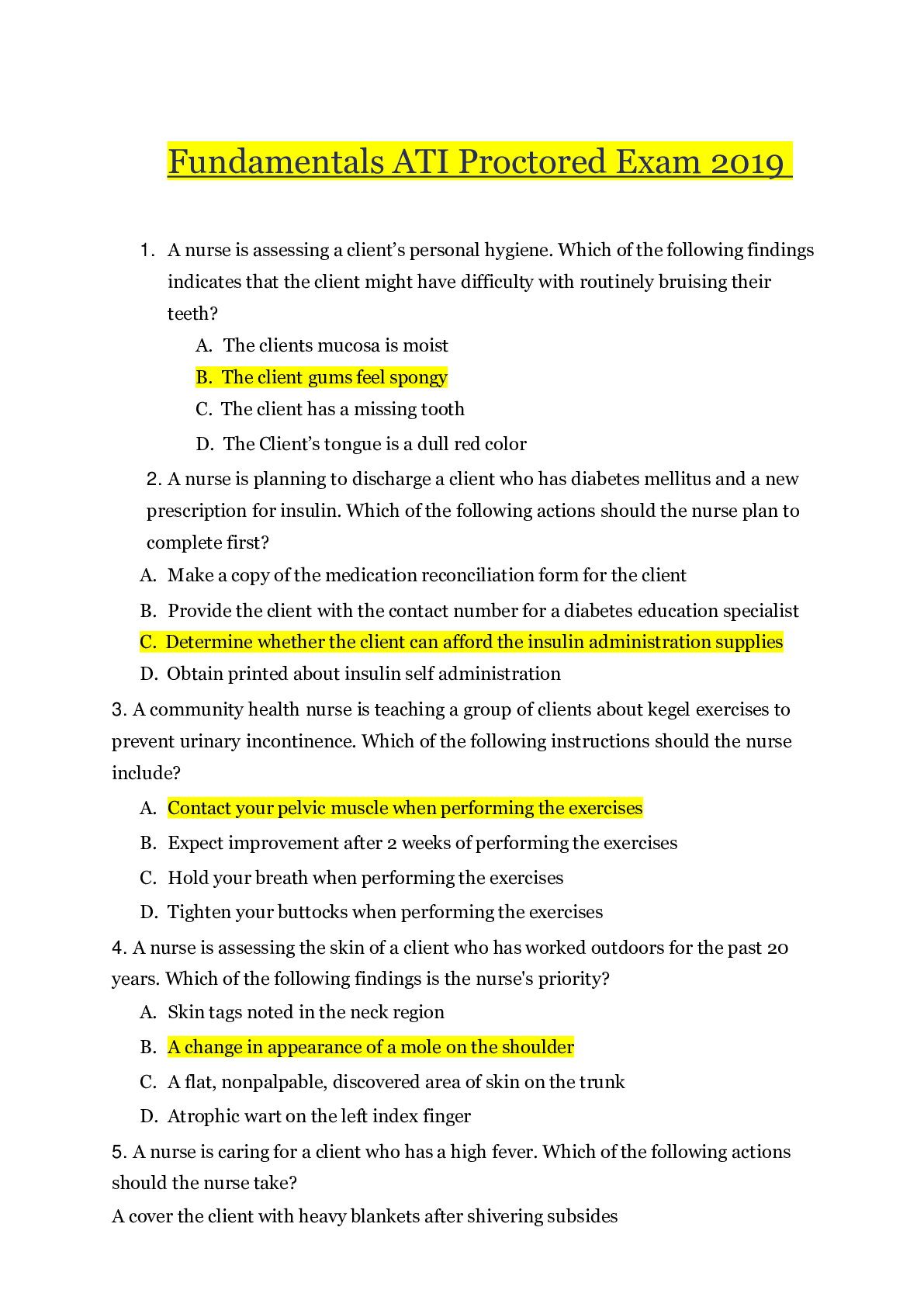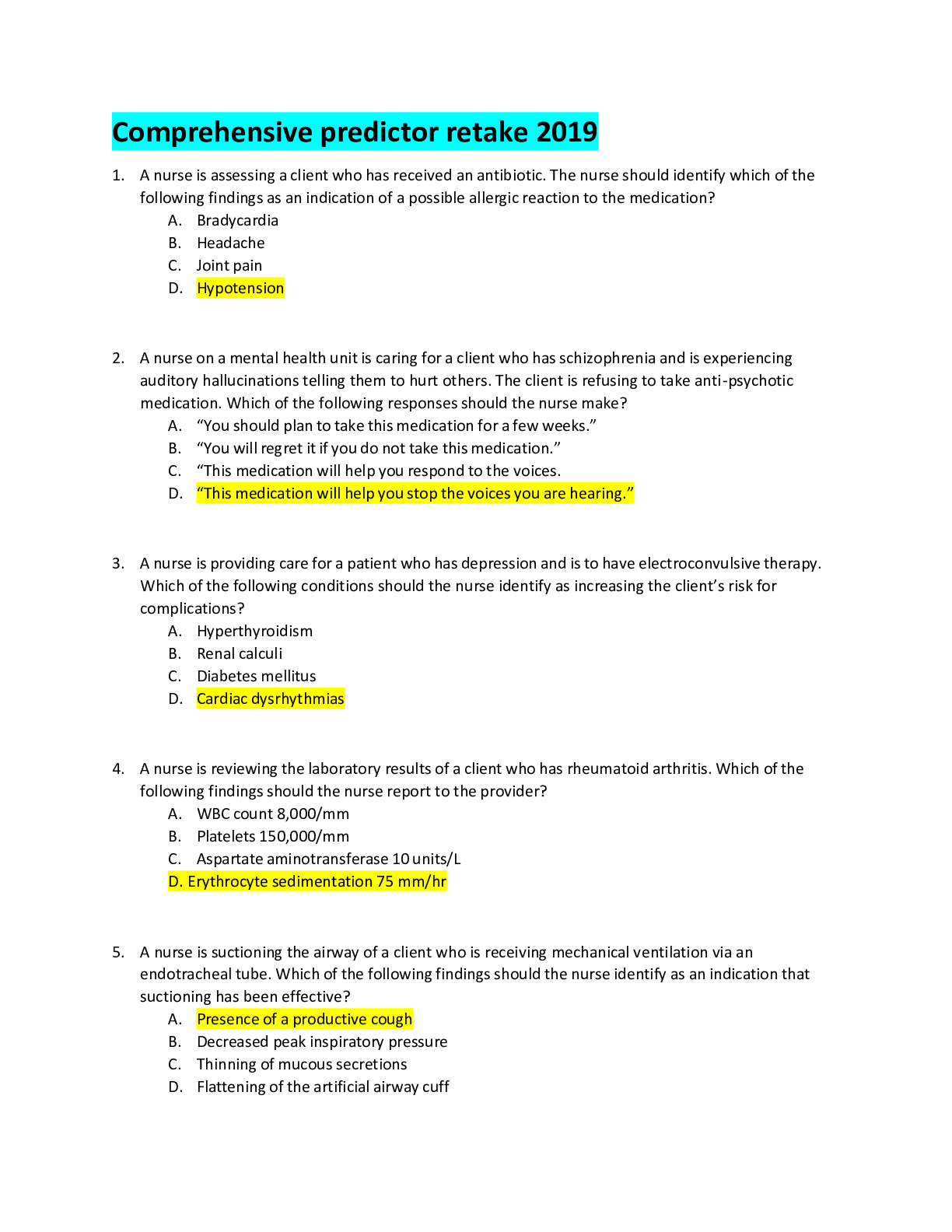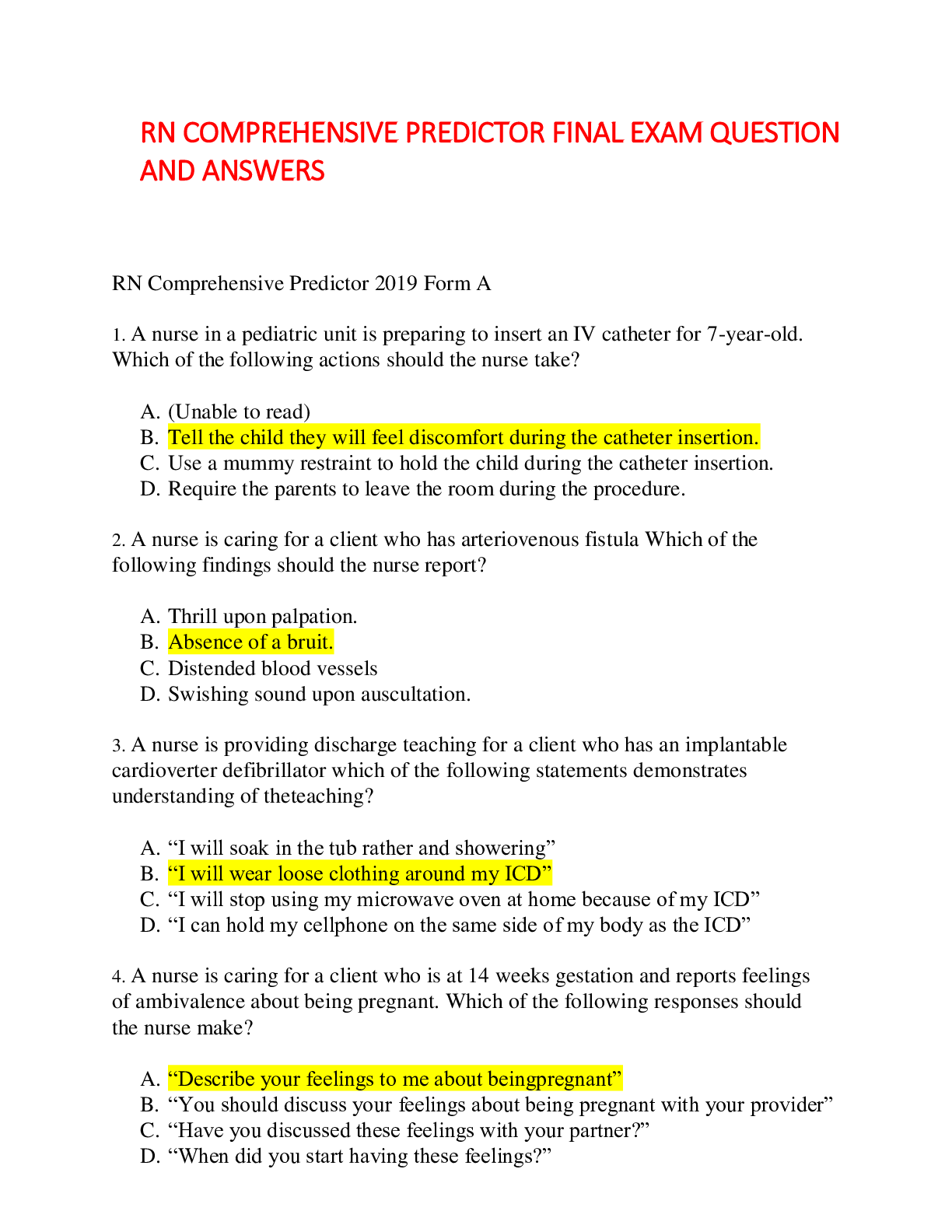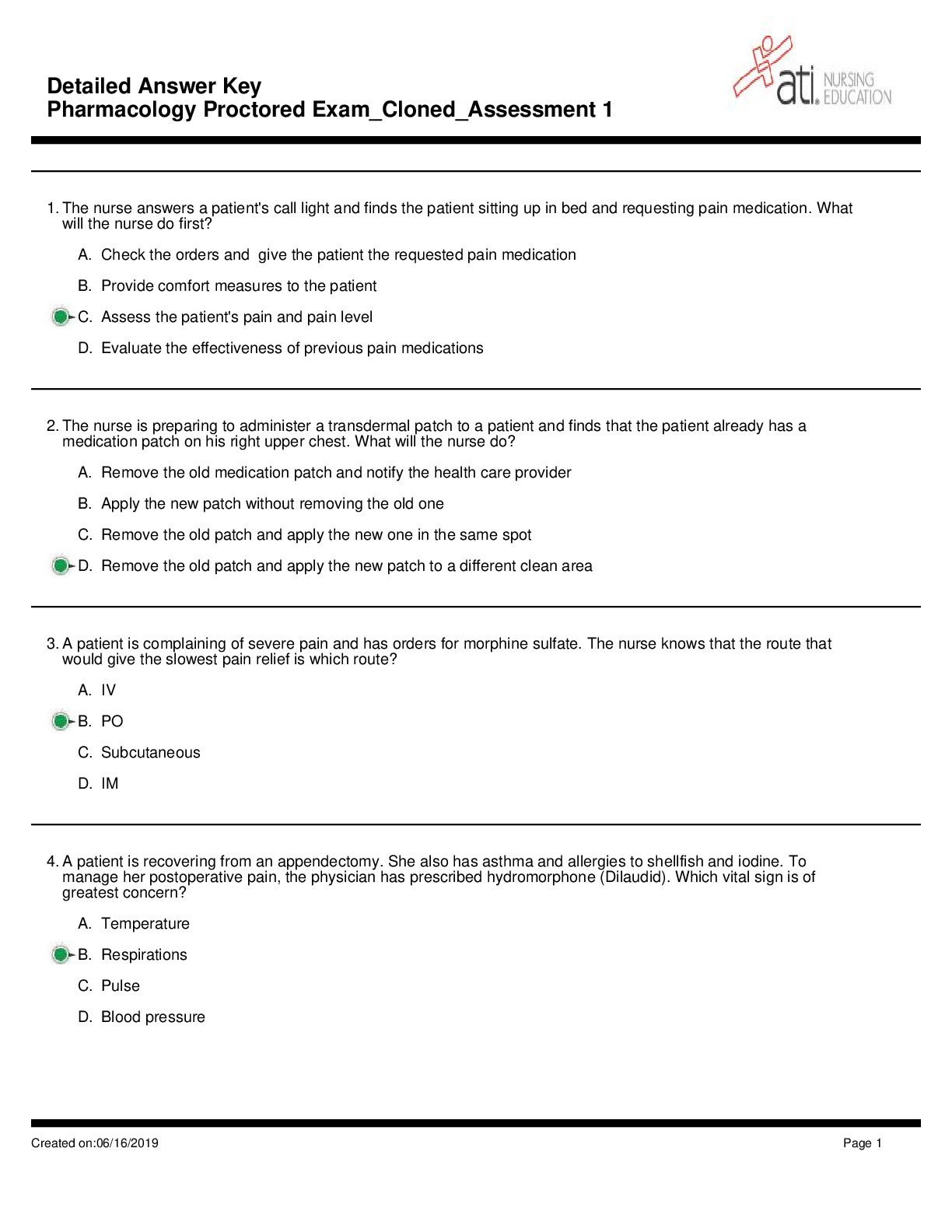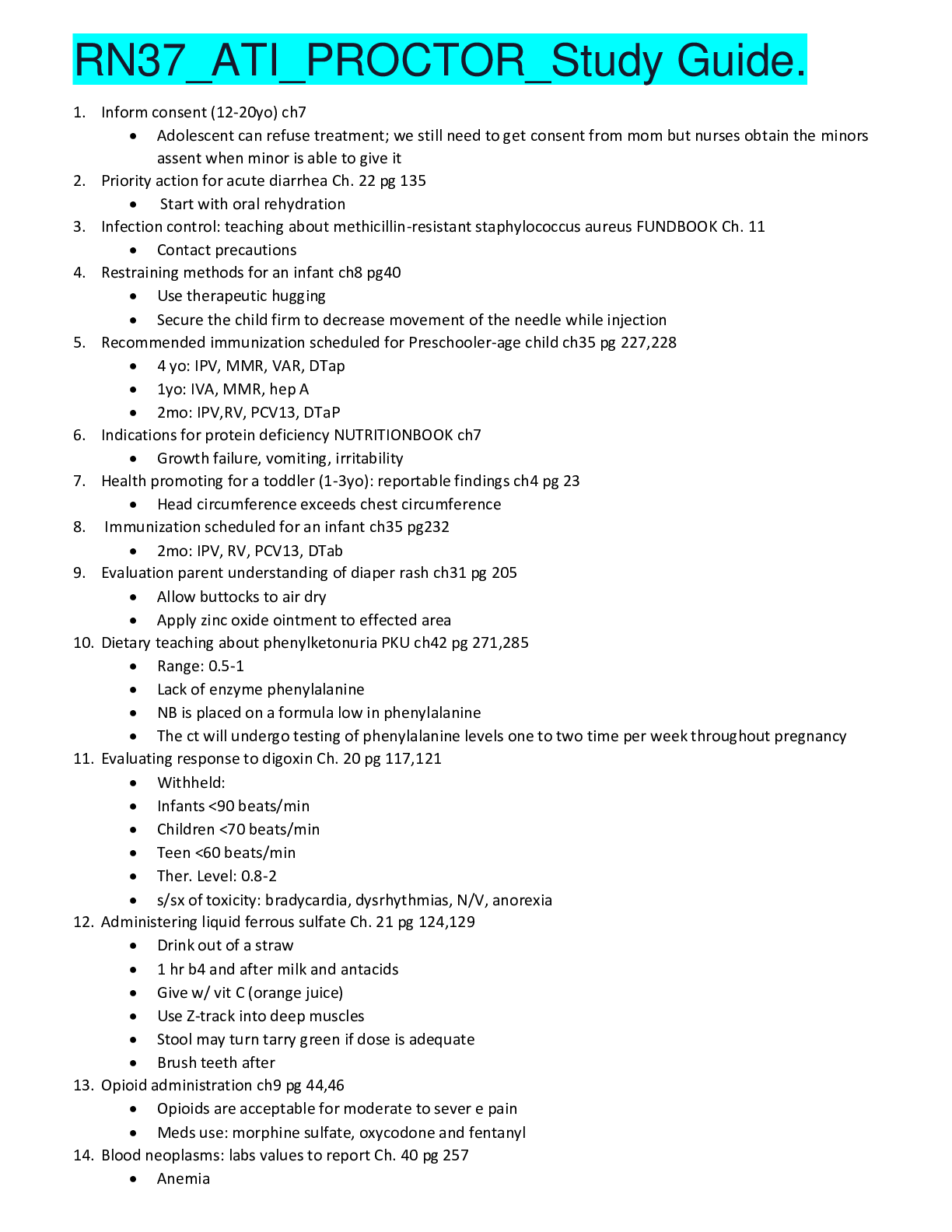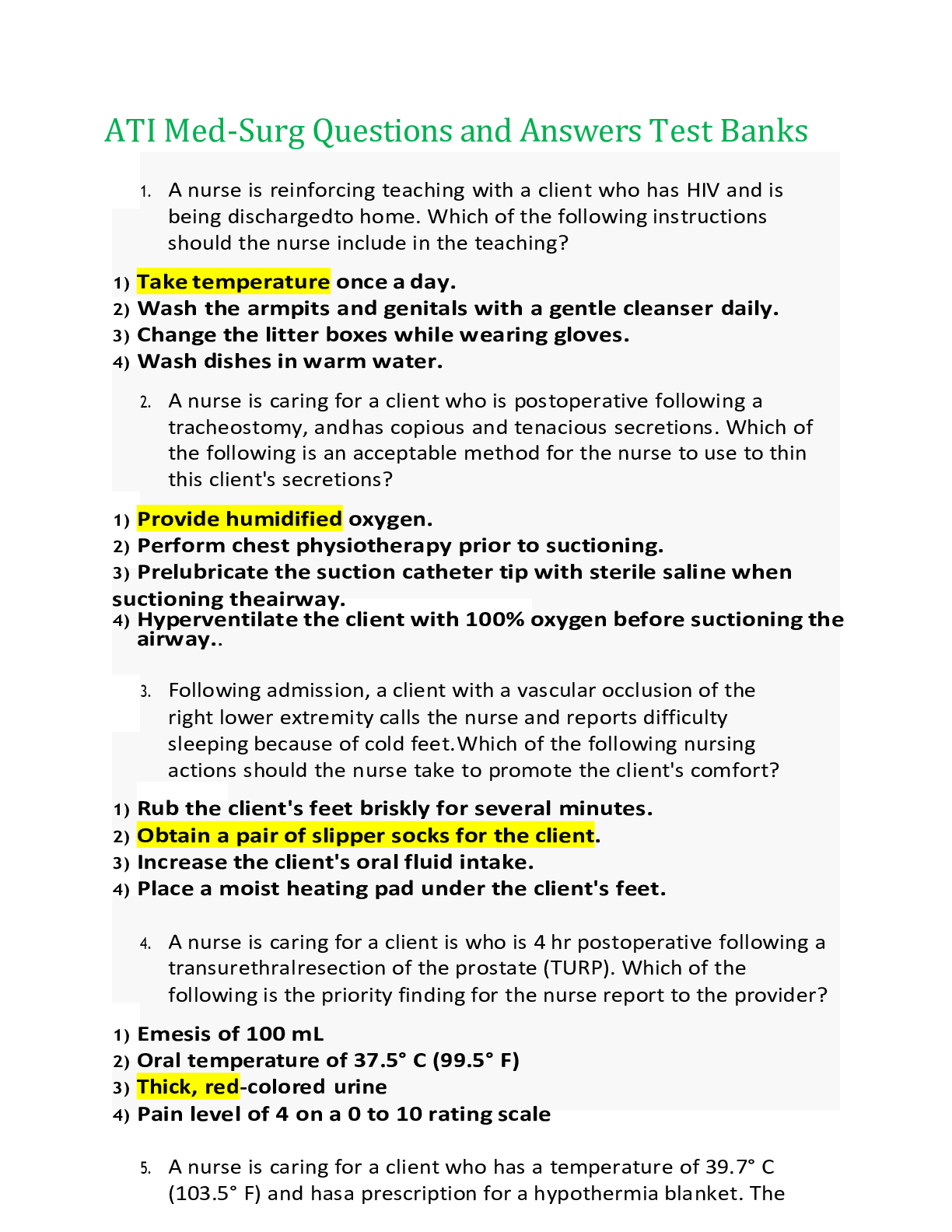*NURSING > EXAM PROCTORED > OB Maternal Newborn ATI Proctored Notes (All)
OB Maternal Newborn ATI Proctored Notes
Document Content and Description Below
Video #1: Contraception & Infertility Diaphragms: client must be refitted for a diaphragm for the following conditions: 1.) Its been 2 years since she’s been fitted 2.) Gained more than 15 pounds ... (7kg) 3.) Had a full term pregnancy 4.) Had a second term abortion When you use a diaphragm, you need to use spermicide with every act of coitus (withdrawal of penis from vagina prior to ejaculation). Every time you withdrawl, instill more spermicide Diaphragm must stay inserted for 6hrs after act of coitus Hormonal Contraceptives (Oral) Side effects: Chest pain, SOB, Leg pain (from a possible clot), headache or eye problems (from a stroke or hypertension) Contraindications: Women with a history of blood clots, stroke, cardiac problems, smoker, breast or estrogen related cancers (pill contains estrogen) Depo-Provera/Medroxyprogesterone Injectable progestin Can cause decreased bone mineral density or loss of calcium Nursing action: Ensure patient has adequate intake of calcium and vitamin D IUD Increase risk for PID Can cause uterine perforation or ectopic pregnancy (increases risk for ectopic pregnancy) Look out for/Notify PCP: Change in string length IUD is moving and not in the right place Foul smelling vaginal discharge Pain with intercourse Fever/Chills (infection) Infertility is defined as an inability to conceive desire engaging in unprotected sexual intercourse for a prolonged period of time or at least 12 months. Common factors associated with infertility include: Decreased sperm production (Sperm analysis) Endometriosis Ovulation disorders Tubal occlusions If you test and use DYE (used in the fallopian tubes), make sure the woman is not allergic to iodine or shellfish/seafood Video #2: Signs of Pregnancy Presumptive: Can be defined by things/reasons other than pregnancy Amenorrhea Can be anorexic or exercising too much Fatigue Didn’t sleep well Nausea/Vomiting Sick Urinary Frequency UTI Quickening/Fluttering in stomach Gas Probable: Changes that make the examiner suspect a woman is pregnant (primarily related to physical changes of the uterus). Abdominal enlargement: Related to changes in uterine size, shape, and position Hegar’s Sign: Softening and compressibility of the lower uterus Chadwick’s Sign: Deepend violet bluish color of cervix and vaginal mucosa Goodell’s Sign: Softening of cervical tip Ballottement: Rebound of unengaged uterus Braxton Hicks Contractions: False contractions that are painless, irregular, and usually relieved by walking Positive Pregnancy Test: Woman’s hormonal level may not be normal Fetal Outline: Positive: Very distinct things. Fetal Heart Sounds Fetal Heart Beat can be heard Can see the baby with ultrasound Can feel movement in the uterus Naegele’s Rule: LMP – 3 months + 7 days + 1 year Cathy’s Rule: + 9 months + 1 week Know how to find out GTPAL numbers G= Gravidity (# of times a woman has been pregnant PLUS current pregnancy) T= Term Births (How many baby’s were delievered at term 38 WEEKS OR MORE) P= Preterm Births (Below 38 weeks) A= Abortion (spontaneous or not) or miscarriages L= Living children Video #3: Weight Gain & Nutrition During Pregnancy AND Diagnostic Tests During Pregnancy Weight Gain & Nutrition Normal weight gain = 25- 35 pounds Overweight person weight gain = 15- 25 pounds Underweight person weight gain = 28-40 pounds During 1st trimester A woman should only gain 1-2 kg (2-4 pounds); A woman should not gain 1 pound per week. During 2nd trimester 1 pound per week is normal; increase caloric intake by 340 calories per day During 3rd trimester 1 pound per week is normal ; increase caloric intake by 450 calories per day If you are breastfeeding after pregnancy You still need to eat an extra 300-400 calories per day Intake of FOLIC ACID Helps prevent Neural Tube Defects (NTD) Sources: dark green leafy veggies; orange juice Women should increase their fluid intake to 2-3L per day Women should limit their caffeine intake to 300 mg per day No amount of alcohol is okay Diagnostic Tests During Pregnancy Noninvasive = Full Bladder Invasive = Empty Bladder Ultrasound Bladder should be full to help sound waves resonate better Amniocentesis Bladder should be empty Biophysical Profile (BPP): Scored from 0-10 Score between 8-10 Healthy Baby Tests Measures 5 things Reactive HR (0/2) Breathing (0/2) Body Movement (0/2) Fetal Tone (0/2) Amniotic Fluid Volume (0/2) Non-Stress Test (NST) Non-invasive [Show More]
Last updated: 1 year ago
Preview 1 out of 16 pages

Reviews( 0 )
Document information
Connected school, study & course
About the document
Uploaded On
Mar 24, 2021
Number of pages
16
Written in
Additional information
This document has been written for:
Uploaded
Mar 24, 2021
Downloads
0
Views
28

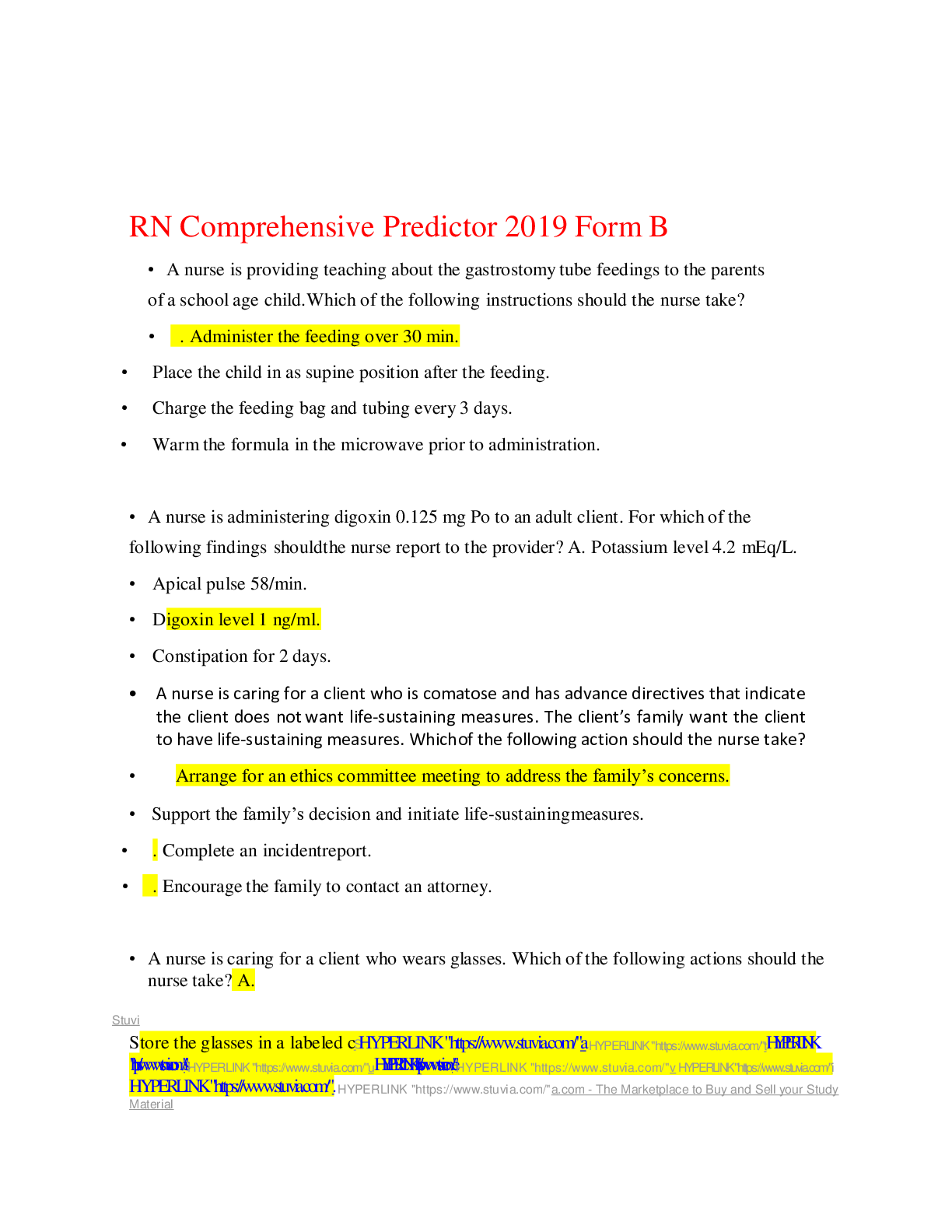
.png)
